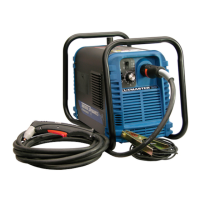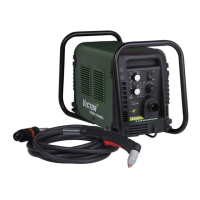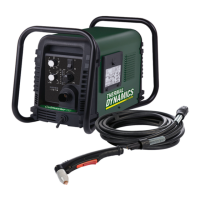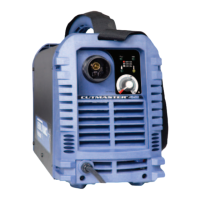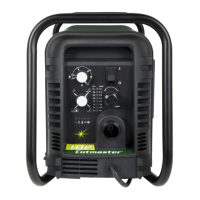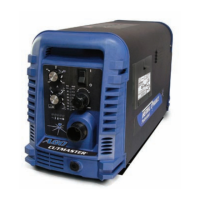Manual 0-2898 4-3 TROUBLESHOOTING
B. How to Use the Troubleshooting Guide
The following information is a guide to help the Service
Technician determine the most likely causes for various
symptoms. This guide is set up as follows:
1. Perform operational check(s) on the equipment to iso-
late problem to possible circuit(s) per Subsection 4.06,
Circuit Fault Isolation.
2. Determine symptom and isolate to defective assem-
bly using the following format:
X. Symptom (Bold Type)
Any Special Instructions (Text Type)
1. Cause (Italic Type)
a. Check/Remedy (Text Type)
3. Locate your symptom in the appropriate Subsection.
4. Check the causes (easiest listed first) for the symptom.
5. Check the remedies listed for each cause. Remedies
may have different specific information depending on
the input voltage of the power supply.
6. Repair as needed being sure to verify that unit is fully
operational after any repairs.
NOTES
Many signals are transferred between Power Sup-
ply components on cables. If these cables become
faulty they can cause various problems. Do not
forget about these cables when troubleshooting.
While troubleshooting visually inspect the inter-
nal components for signs of overheating, fractures
and damage.
4.06 Circuit Fault Isolation
This section is to help isolate the defective circuit before
troubleshooting, identify symptoms, and test the unit for
proper operation. Follow the instructions as given to iden-
tify the possible symptom(s) and the defective circuit.
After repairs are complete, run the following tests again
to verify that the unit is fully operational.
A. Initial Setup Conditions
1. Connect gas supply to rear of Power Supply.
2. Turn on gas supply and adjust Power Supply Gas
Regulator to 65 psi / 4.5 bar.
3. Set the Power Supply controls as follows:
• ON/OFF / switch to OFF .
• CURRENT (A) control knob to maximum
• RUN / SET switch to SET
B. Main Input and Internal Power Tests
1. Connect main AC power to the unit.
2. Set the Power Supply ON/OFF switch to ON (up
position) and check the following:
• AC indicator steady ON
• TEMP Indicator OFF
• GAS Indicator ON
• Gas flows from torch
• Fan operates
• DC lndicator is OFF
3. Turn RUN / SET switch to RUN
• Gas should stop flowing
4. Turn ON / OFF switch to OFF, then back to ON. Check
the following:
• AC indicator ON
• Temp indicator OFF
• Gas indicator ON (gas does not flow)
• Fan Operates
• DC indicator OFF
This completes the Main Input and Internal Power Tests.
If the unit functions as described then proceed to para-
graph 'C'. If the unit does not function as described then
note the symptom and proceed to Subsection 4.07, Main
Input and Internal Power Problems.
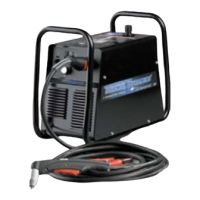
